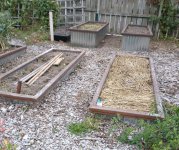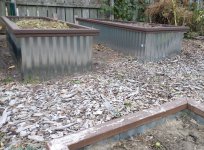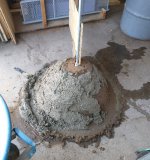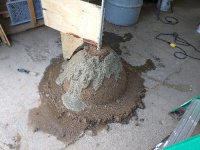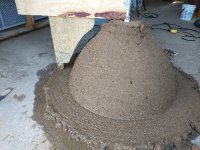- Joined
- Jul 3, 2020
- Messages
- 562
- Reaction score
- 348
- Location
- Western Michigan
- Hardiness Zone
- 6B
- Country

Someone asked about wooden raised beds. These are raised beds I made out of corrugated galvanized roofing panels. I have 6 total built and placed right now with parts to build two more taller beds.
These are about 95.5" x 32" on the outside of the rims.
The upper rim is made of 2x3 material with a ripped in half 2x3 attached below it. The roofing panels fit inside the L shape that the two pieces make.
The lower edge of the panels is set a few inches into the ground to hold them in place.
And, yes, the OCD is strong here so I placed the beds and leveled them out and squared them so they're in nice neat rows.
These are about 95.5" x 32" on the outside of the rims.
The upper rim is made of 2x3 material with a ripped in half 2x3 attached below it. The roofing panels fit inside the L shape that the two pieces make.
The lower edge of the panels is set a few inches into the ground to hold them in place.
And, yes, the OCD is strong here so I placed the beds and leveled them out and squared them so they're in nice neat rows.

